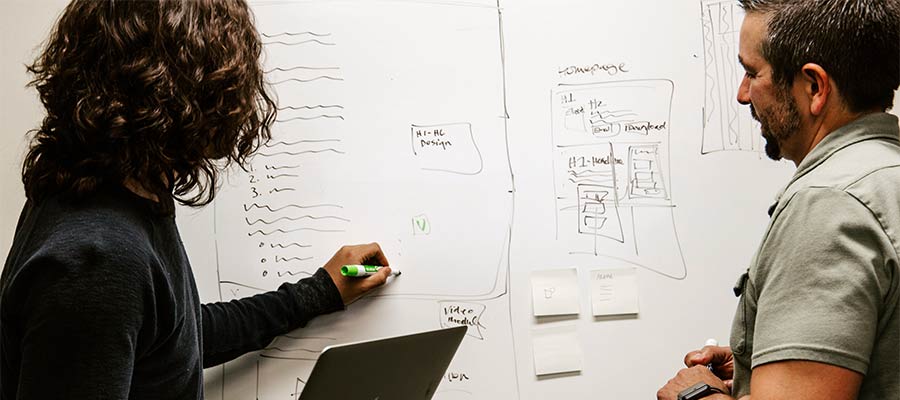Tips for Building Charity and Non-profit Websites
The web serves a crucial role in the non-profit sector. It’s a way to connect with prospective donors and members. In addition, an organization’s website can be a difference-maker when it comes to conveying a message.
Thus, building websites for charities and non-profit organizations differs from a typical business site. Unique goals and responsibilities make for a highly-specialized process. That may be why some web designers and agencies tend to focus on these types of clients.
And while there are many tools aimed at this market, it still takes a keen understanding to use them effectively. For instance, it’s one thing to have a WordPress theme that claims to be designed with non-profits in mind. But that won’t help without a well-thought-out content strategy.
Today, we’ll share some tips for building charity and non-profit websites that stand out. Let’s get started!
A Great Website Starts with Research
No two clients are the same. And that especially goes for charities and other non-profits. Each has a story to tell and one or more actions they want users to take. A web designer’s job is to find out what that is, then help accomplish these goals as effectively as possible.
In practice, this means gathering information from various sources. If the organization has an existing website, it’s worth reading through its content. This will provide you with a sense of where they’ve been. Plus, it’s an excellent opportunity to discuss any improvements that could be made.
There’s also value in having a conversation dedicated to a client’s goals. Priorities and messaging shift over time. What was relevant the last time around may not apply quite as much today.
In some instances, a client may struggle to communicate with their audience. Smaller organizations where stakeholders play multiple roles come to mind. They may be so busy that perhaps they haven’t taken the time to clearly articulate their mission.
It starts by asking questions, such as:
- What is your core mission?
- Who is your target audience?
- What’s the most important thing you want visitors to know?
- What actions do you want visitors to take when they visit your website?
When you have solid answers, you can craft a strategy that takes this information into account.

Find Others Who Are Succeeding
In the world of non-profit websites, there are plenty of places to find inspiration. Regardless of size and location, browsing similar websites can demonstrate what makes a great user experience – along with what doesn’t.
As we mentioned, everyone’s unique. Therefore, it’s not advisable to simply copy what someone else is doing. However, you may find specific elements that are a fit.
This type of exploration is recommended for both designers and clients. It can facilitate a conversation about what makes sense for their particular use case.
For example, clients can become infatuated with the way a shopping cart works or even a flashy slider. But it’s important to determine whether or not they are the most effective solution. If it doesn’t help get the message across or requires a radical change in their workflow, it may not be worth implementing.
Still, you’ll find plenty of great ideas out there. Discover the right ones, and they can provide a solid foundation to build on.

Aim for a Streamlined User Experience
When you think about it, user experience (UX) can be a huge factor in the well-being of an organization. Consider a charity that relies on online donations. If the process is too difficult for potential donors, they could miss out on a significant amount of money.
Nobody wants this to happen. But some factors can unintentionally get in the way of a streamlined user experience.
When it comes to donations, some clients may be a bit shy in asking visitors. The content they provide could include a donation link buried deep within a page or one that requires several clicks to access. Not only does this make it difficult for users, but it also conveys a lack of urgency.
That’s why it’s vital to guide users in the actions we want them to take. Whether that’s making a donation, signing a petition, or sharing a blog post on social media. The idea is to make participation as easy as possible.
It’s an area where clients may require a little hand-holding. Again, this is where studying other websites can come in handy. You can demonstrate good UX in action and explain what makes it effective. This should put you and your client on the same page.

Promote Investment in Technology
Budgets are a concern for every project. However, they can be highly significant for non-profit clients.
Thus, there may be a tendency for clients to skimp on certain features. Sometimes it’s a necessity. But when it comes to technology, it may be worth taking a closer look. The benefits could outweigh the costs.
Going back to our goal of streamlined UX, let’s consider a shopping cart. Perhaps it requires three or four steps to successfully check out.
That’s fine – but what if we could make the process even easier? A plugin that allows for single-page checkout may have some upfront/recurring costs. But if it has the potential to significantly increase a site’s conversion rate, it’s worth implementing.
Clients don’t always see the long-term benefits of such technology. But we can help them envision the possibilities. It may not always produce immediate results, but you’ve at least helped to educate them. That could lead to enhancements down the road.

Help Your Non-profit Clients Build a First-Class Website
Sure, non-profits and charities share some characteristics with businesses. But they are also a separate segment of the market. Their needs are unique, and web designers have to adjust accordingly.
The key to these projects revolves around listening to clients and understanding what’s important to them. From there, it’s about introducing them to best practices when it comes to both UX and technology. Last but not least, implementation and delivering a fantastic website.
And the more you work with non-profits, the better you’ll become at understanding the finer details. We hope this guide helps you in your journey!